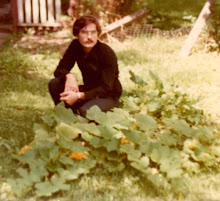Notes to Get Lost In and Find the Other
Tony Hiss
The Experience of Place
on simultaneous perception
We can experience any place because we've all received, as part of the structure of our attention, a mechanism that drinks in whatever it can from our surroundings. This underlying awareness — I call it simultaneous perception — seems to operate continuously, at least during waking hours, even when our concentration seems altogether engrossed in something else entirely. [...] While normal waking consciousness works to simplify perception, allowing us to act quickly and flexibly by helping us remain seemingly oblivious to almost everything except the task in front us, simultaneous perception is more like an extra, or a sixth, sense: It broadens and diffuses the beam of attention evenhandedly across all the senses so we can take in whatever is around us — which means sensations of touch and balance, for instance in addition to all sights, sounds, and smells.on utter watchfulness
We can detect cross-sensory patterns like the cooperation in a moving crowd because of three other processes in simultaneous perception — processes that have been the object of research. According to Anton Ehrenzweig [The Hidden Order of Art], an art historian at the University of London, his work with artists shows that people have an innate capacity that he calls "utter watchfulness": We can pay equal attention to everything at once, omitting nothing and at the same time emphasizing nothing. Ehrenzweig also considered the speed with which we can put together and respond to the information made available by "utter watchfulness" and concluded that people's thinking then show "split-second reaction to innumerable variables."on choice and consciousness
[...] a secure place, as well as a quiet place, and a place with a rich variety of things to look at, listen to, and otherwise interact with. Such places offer simultaneous perception an enriched kind of stimulation and offer us a chance to intensify such perception by making it conscious. But then we have to choose what to do: whether to keep our attention on our own thoughts and plans or accept whatever our surroundings have to give us — whether to experience ourselves or what's around us. That choice — made once or made many times — determines in the long run how well we get to know a place and whether we ever get the full benefit of the experiences it makes available.on legibility
The Kaplans think that we also have an innate preference for open spaces, which provide what they call "legibility." "Just as one can imagine oneself somewhere in a scene acquiring new information, one can imagine oneself somewhere in a scene getting lost," they write in Cognition and Environment. "Legibility . . . is characteristic of an environment that looks as if one could explore extensively without getting lost. Environments high in legibility are those that look as if they would be easy to make sense of as one wandered farther and farther into them. Enough openness to see where one is going, as well as distinctive enough elements to serve as landmarks, are important here."from Froebel
In Froebel's formulation, which was based in part on the many days he spent outdoors as a child [...] people are created both as wholes and as parts — that is, they have to learn how to function both as separate individuals and as participants in larger patterns that include harmonious relationships with other people and all of life. And, Froebel asserted, it was only outdoors that a person could learn empathy [...]to read, to sense, to experience, to project, empathize
And so for day 1314
19.07.2010
